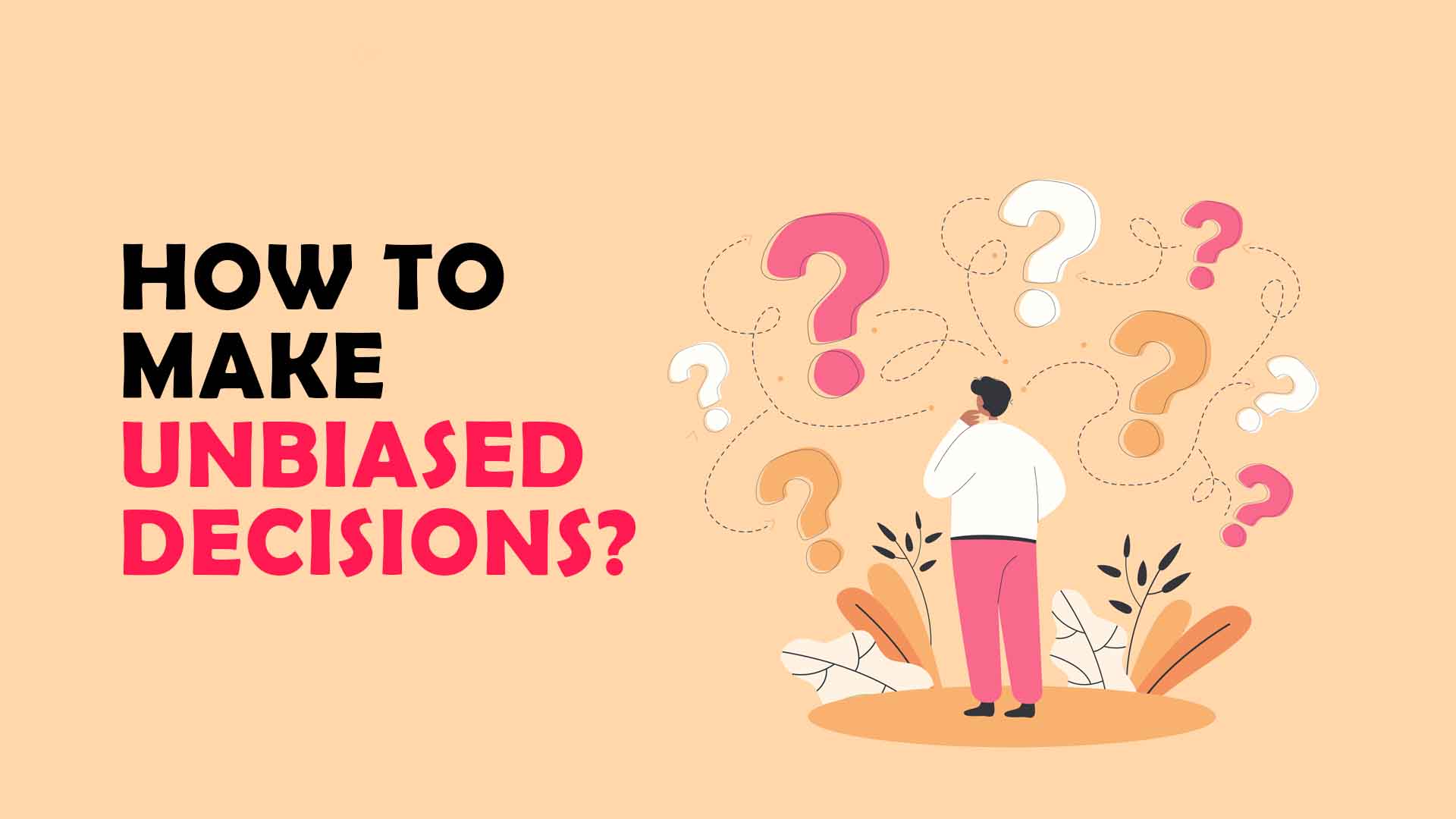We all have to make decisions on a day-to-day basis. Some of these decisions are good, while some of them have a negative impact on our lives and those around us. The problem is that we often let ourselves be guided by our biases, and that leads us to make worse decisions. But how can we make unbiased decisions? Let’s take a look at a few strategies.
1. Don’t just blindly follow your emotions
There are situations when your emotions will guide you to make the right choice, usually in matters relating to your personal life. But when making professional choices, especially those that impact other people, you need to leave your emotions aside.
It’s easier said than done, but a good way of doing this is naming the emotion you feel (are you angry, anxious, sad? What are you feeling right now?) and setting it aside. When you recognize and become aware of the emotion, it’s easier to limit the impact it has on your decision.
2. Don’t go with your initial reaction
Our initial reactions can sometimes be very strong, but that doesn’t mean they are always right. Sometimes, we make a snap judgment of a situation or a person that won’t prove to be true later, but we are likely to stick with it.
Take stock of your initial reaction – what was it? How did you feel and respond? Then measure this initial reaction against the evidence. For example, if your first impression of a job applicant was that they were irresponsible, but later you see them arriving on time and getting things done at a good level, it’s time to reassess this first impression.
Give yourself time to confirm or reject that initial snapshot.
3. Consider various scenarios
Often, we tend to run with a single possible scenario (and, usually, it’s the worst-case scenario). When we do this, the potential outcome we came up with starts seeming very likely and probable, even if it’s just a situation we imagined. Instead of allowing yourself to settle for a single scenario, start considering alternatives.
What would the best-case scenario look like? What if things turn out in an average way, not too good and not too bad? Try to think of at least a couple of other scenarios and consider them seriously alongside the one you first thought of.
4. Start with the basics and work your way up
A good way to start a decision-making process is to work your way up. Start by discarding the options you know that will not work for you and figure out the central elements of the choice.
For example, if you are choosing a vacation spot, you might decide right away that you want to be near a beach and in a spot with a lot of nightlife. That will help you manage your options and reduce them down.
Understand what you are basing your decision on and what your core criteria are – what matters most to you, what needs to be present, and what aspects would characterize a desirable outcome.
5. Don’t try to find the perfect option for everything
Often, the trap of decision-making is that we try to make the best possible choice – and that’s not always practical. When we try to make the perfect decision, we might have to consider hundreds of options and evaluate them by putting in a lot of time and energy. This is not something we are wired to do, as we can comfortably evaluate around 5-7 options at a time. When we have hundreds, we get stuck.
Also, it can have little meaning when the decision has low stakes. Does it really matter whether you get the best possible microwave? Even with an important decision, sometimes you need to choose what’s good enough rather than what’s perfect, or else the process will drag on indefinitely.
If you have to make a quick choice, go with something that is good enough – it fits the minimum requirements and is likely to lead to a good outcome, rather than looking for the ideal, the best choice that often does not exist.


